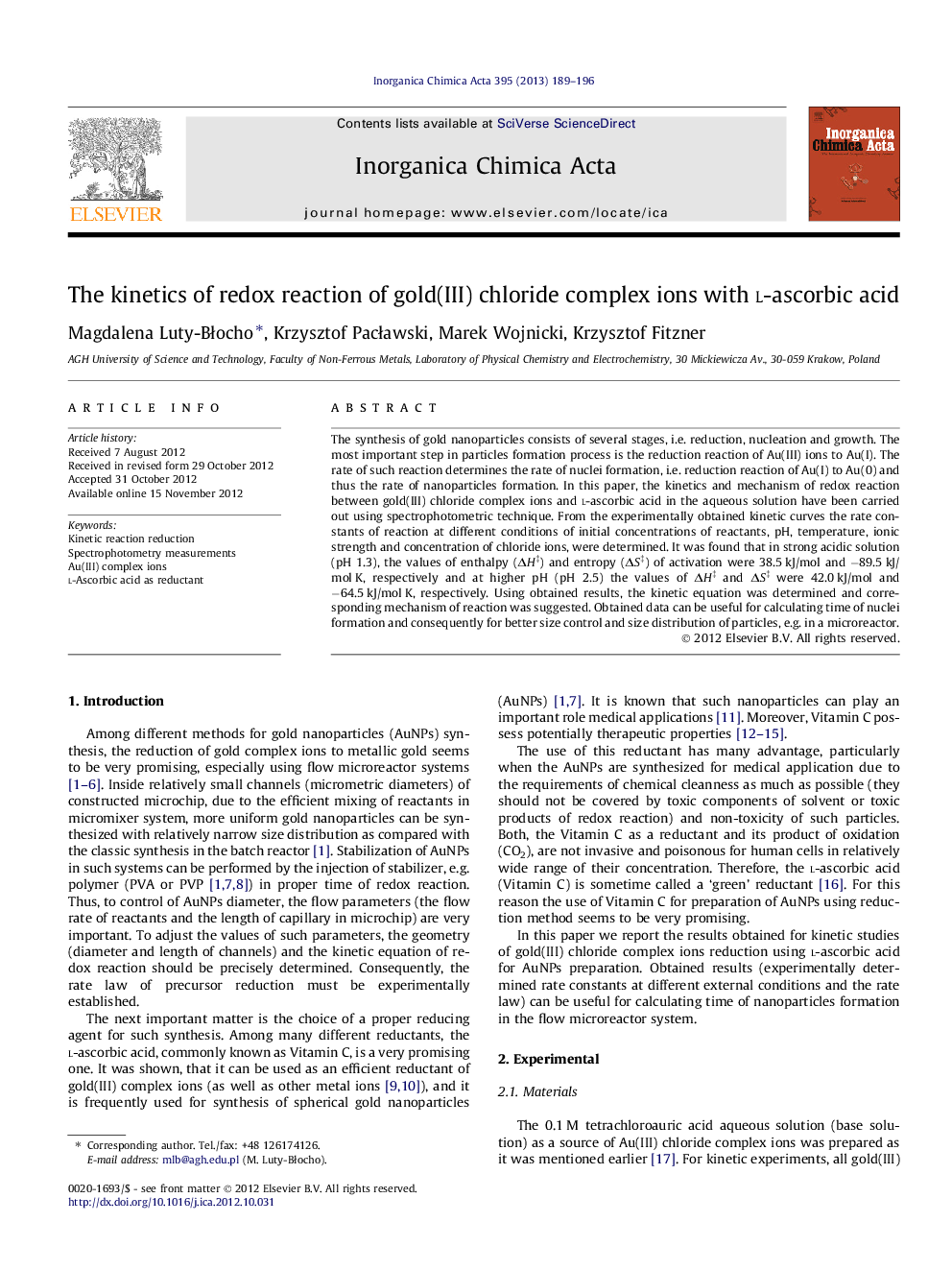| کد مقاله | کد نشریه | سال انتشار | مقاله انگلیسی | نسخه تمام متن |
|---|---|---|---|---|
| 1308441 | 1499192 | 2013 | 8 صفحه PDF | دانلود رایگان |

The synthesis of gold nanoparticles consists of several stages, i.e. reduction, nucleation and growth. The most important step in particles formation process is the reduction reaction of Au(III) ions to Au(I). The rate of such reaction determines the rate of nuclei formation, i.e. reduction reaction of Au(I) to Au(0) and thus the rate of nanoparticles formation. In this paper, the kinetics and mechanism of redox reaction between gold(III) chloride complex ions and l-ascorbic acid in the aqueous solution have been carried out using spectrophotometric technique. From the experimentally obtained kinetic curves the rate constants of reaction at different conditions of initial concentrations of reactants, pH, temperature, ionic strength and concentration of chloride ions, were determined. It was found that in strong acidic solution (pH 1.3), the values of enthalpy (ΔH‡) and entropy (ΔS‡) of activation were 38.5 kJ/mol and −89.5 kJ/mol K, respectively and at higher pH (pH 2.5) the values of ΔH‡ and ΔS‡ were 42.0 kJ/mol and −64.5 kJ/mol K, respectively. Using obtained results, the kinetic equation was determined and corresponding mechanism of reaction was suggested. Obtained data can be useful for calculating time of nuclei formation and consequently for better size control and size distribution of particles, e.g. in a microreactor.
The kinetic of Au3+ reduction was investigated at different conditions for aqueous solution of reagents. In order to register the kinetic curves of stage I, the stopped flow technique was used. From obtained results the kinetics parameters and the redox reaction mechanism were described. Finally, the colloidal Au was obtained due to reduction of Au+ to Au0.Figure optionsDownload as PowerPoint slideHighlights
► The reduction of Au(III) ions with l-ascorbic acid is presented.
► Vitamin C is an efficient reductant of Au(III) ions.
► The rate of reaction reduction of Au(III) ions increases with pH of a solution.
► The reaction includes two steps: reduction of Au(III) ions to Au(I), then to Au(0).
Journal: Inorganica Chimica Acta - Volume 395, 30 January 2013, Pages 189–196